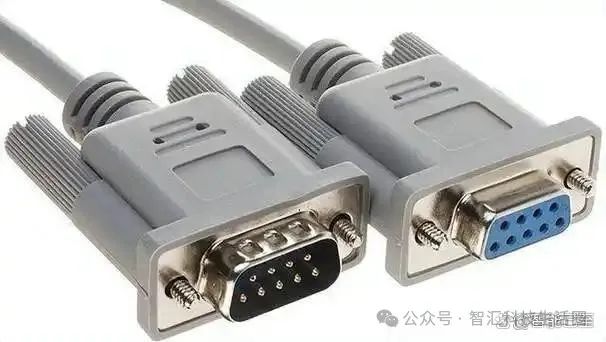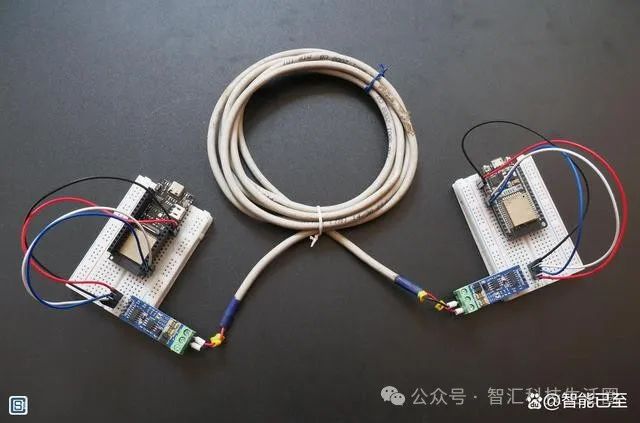In industrial automation and monitoring systems, the stability and reliability of data transmission are crucial. RS-485 and RS-232, as two common serial communication standards, each have unique advantages and limitations. Especially in terms of long-distance cable transmission, achieving stable and efficient data communication has always been a focus for engineers. This article will delve into the solutions for RS-485 and RS-232 in long-distance cable transmission, aiming to provide references for practical applications.

1. Challenges and Solutions for RS-232 Long Distance Cable TransmissionRS-232, fully known as the EIA RS-232C standard, is a serial communication interface standard. It uses a single-ended ground wire as the transmission wire to connect the data sending and receiving devices. However, RS-232 has many limitations in long-distance transmission. Firstly, its transmission distance is relatively short, generally not exceeding 15 meters, which limits the application of RS-232 in some long-distance communication scenarios. Secondly, RS-232 uses a single-ended communication method, which is susceptible to noise interference, affecting the stability of data transmission.To extend the communication distance of RS-232, engineers typically adopt the following solutions:1. Use RS-232 optical isolation remote transceivers: This device can meet the full-duplex point-to-point communication of RS-232 signals at about 1000 meters, and both ends are optically isolated from each other, effectively improving the stability of data transmission. By using optical isolation, it can prevent electrical interference and protect the interface circuit from damage.2. Use RS-232/RS-485 converters: RS-485 supports longer transmission distances and higher anti-interference capabilities. Therefore, converting RS-232 signals to RS-485 signals for transmission can significantly extend the communication distance. For example, the RS-232/RS-485 converter from Bosi Electronics can enhance communication distance up to 1800 meters. However, it is important to note that this solution still cannot achieve longer distance communication under the condition of twisted pair as the communication cable medium.3. Reduce communication speed: Lowering the communication speed while maintaining signal quality can also extend the transmission distance. This is because high-speed signals are more susceptible to noise interference during transmission. Therefore, for long-distance communication, appropriately lowering the speed can improve transmission stability.2. Advantages and Solutions for RS-485 Long Distance Cable TransmissionCompared to RS-232, RS-485 has significant advantages in long-distance transmission. RS-485 uses differential signal transmission, enabling high-speed data transmission over longer distances. Additionally, RS-485 supports multi-point communication, allowing multiple devices to connect to the same communication network simultaneously. Under ideal conditions, its transmission distance can reach several kilometers, giving RS-485 a clear advantage in scenarios requiring long-distance communication.However, even RS-485 faces some challenges in long-distance transmission. For instance, as the transmission distance increases, signal attenuation and noise interference can also intensify. To overcome these challenges, engineers typically adopt the following solutions:1. Choose high-performance driver chips: High-performance driver chips can provide stronger signal output capabilities, thereby resisting signal attenuation and noise interference. This is particularly important for long-distance transmission.2. Use shielded twisted pairs: The shielding layer can effectively prevent external electromagnetic interference from affecting the signal. Meanwhile, the twisted pair structure can also reduce crosstalk between internal signals. Therefore, shielded twisted pairs are ideal for long-distance RS-485 communication.3. Increase terminal resistance: In long-distance transmission, terminal resistance can match the line impedance, reducing signal reflection and echo loss. This helps improve signal quality and transmission stability.4. Use repeaters: When the transmission distance exceeds the maximum communication distance of a single RS-485 device, repeaters can be used to extend the communication range. Repeaters can automatically determine the bus status at both ends, achieving automatic switching of the send/receive states at both ends and reducing transmission delays during the send/receive process. At the same time, repeaters can provide surge protection power against lightning strikes and suppress surge voltages and transient overvoltages caused by various reasons on the line.5. Wireless repeater solutions: In special circumstances, such as complex geographical environments or difficult wiring, wireless repeater solutions can be adopted. Wireless data transmission stations, as a communication medium, can provide real-time and reliable data transmission. Through wireless repeaters, ultra-long-distance communication can be achieved, and the network structure is flexible, facilitating device connections.

3. Comprehensive Solution: CAN232GH Optical Isolation Ultra-Remote DriverIn addition to the above solutions, Bosi Electronics also provides a comprehensive solution – the CAN232GH optical isolation ultra-remote driver. This product can convert RS-232 or RS-485 signals to CAN bus levels for transmission, thus achieving ultra-long-distance communication. The CAN bus has outstanding reliability, real-time performance, and flexibility, making it very suitable for long-distance communication scenarios.The core principle of the CAN232GH optical isolation ultra-remote driver is to convert RS-232 or RS-485 levels into CAN bus levels, and the remote CAN232GH then converts the CAN levels back into RS-232 levels or RS-485 levels. This allows for ultra-long-distance transmission of RS-232 or RS-485 signals. Additionally, this product also features optical isolation and DC-DC power isolation conversion, along with surge protection components to ensure the safety and stability of network communication.In practical applications, the CAN232GH optical isolation ultra-remote driver can not only solve the RS-232/RS-485 point-to-point communication issue but also form a bus structure with nodes. In the network, each RS-485 device equipped with a CAN232GH can communicate with the upper-level master control computer in a polling manner. This communication method is similar to the usual RS-485 bus but offers higher reliability and stability.

4. Precautions and RecommendationsIn long-distance cable transmission, in addition to choosing the appropriate solution, the following points should also be noted:1. Cable selection: It is recommended to use dedicated serial communication cables, which have shielding features, and during wiring, the shielding layer should be used as the GND ground wire. Compared to Ethernet cables, serial communication cables are not twisted pairs but parallel wires, but they are thicker to ensure low resistance. For long-distance communication, it is strongly recommended to use grounding wires and utilize the shielding layer as the wire.2. Terminal resistance selection: The farther the distance, the larger the terminal resistance. Correct terminal resistance selection can match the line impedance, reducing signal reflection and echo loss.3. Reduce communication speed: In long-distance communication, appropriately lowering the communication speed can improve transmission stability. Therefore, while maintaining signal quality, efforts should be made to reduce communication speed as much as possible.4. Regular inspection and maintenance: Long-distance communication lines are easily affected by external environments and internal factors. Therefore, regular inspection of line status and necessary maintenance should be conducted.In summary, RS-485 and RS-232 have their respective advantages and disadvantages in long-distance cable transmission. By choosing appropriate solutions and paying attention to important considerations, stable and efficient data communication can be achieved. With the continuous development of technology, more innovative solutions will emerge in the future to meet the needs of long-distance communication.